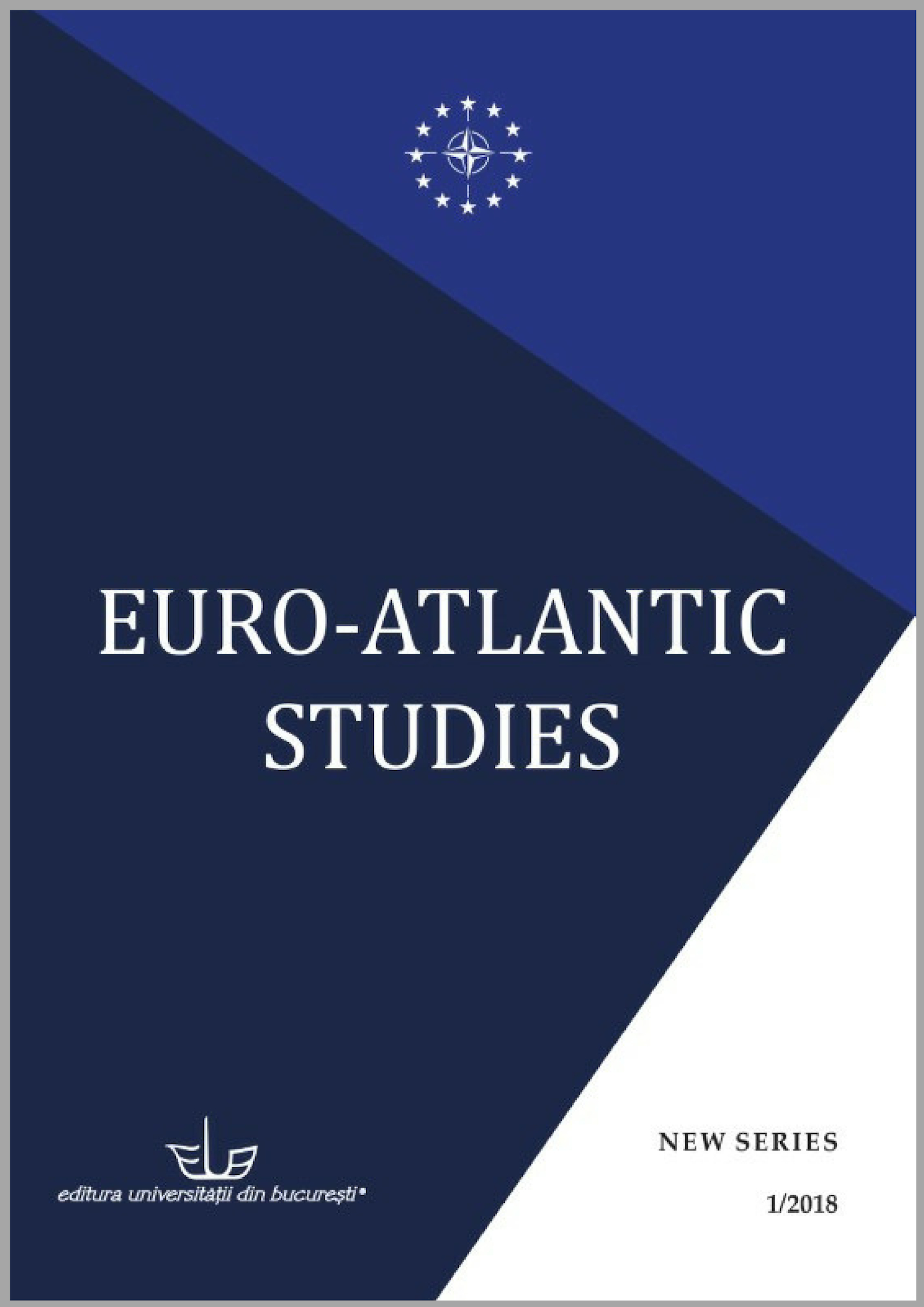
We kindly inform you that, as long as the subject affiliation of our 300.000+ articles is in progress, you might get unsufficient or no results on your third level or second level search. In this case, please broaden your search criteria.

yrian rue (Peganum harmala L.) has been traditionally used in Central Asia for medical purposes, e.g. for treating skin diseases, joint pain, sore throat and cough. It is also applied as an apotropaic means – fumigation with the smoke of burning dried twigs of Syrian rue is commonly practised to ward off evil spirits, “evil eye” and other malevolent forces. According to the other explanations, it has purifying effects and kills microbes. In this article I briefl y outline early descriptions of Peganum harmala in the medical texts of scholars and physicians representing Greek- Arabic-Persian medicine, and focus on the role of this plant in people’s everyday life in Central Asia, based on my field materials from Afghanistan, Kazakhstan and Kyrgyzstan, and literature. In addition, I present the career of Peganum harmala in Central Asian countries during the COVID-19 pandemic, when fumigation with its smoke has been widely practised to protect against the coronavirus. Syrian rue was also used – beside several other plants – by some heads of state, who promoted local traditional medicines at time when they were failing to tackle the pandemic crisis. Applying an anthropological perspective, I pay particular attention to the wider context of these developments and analyse socio-cultural, political and economic factors that have contributed to the increased popularity of Peganum harmala. I also point out possible benefits of testing traditional herbal medicines as potential treatments for COVID-19 and other viral infections and refer to Asian traditional medical systems, especially traditional Chinese medicine (TCM), whose contribution to overcoming the pandemic has been recognised by the WHO.
More...
The article describes a selected ethnologist’s point of view on ethnobotany and ethnomedicine: 1. by what citeria are Possible assessments of the rationality and effectiveness of plant medcines in folk culture, 2. what are the folk justifications for choosing plants for specific purposes, for medicinal purposes.
More...
The world of the Latin Middle Ages was marked by the spiritual-corporeal binomial: the real space was connected with many threads with the spiritual space. Religious symbolism and imagination played a huge role in this binomial. A particular concentration of symbolic and mystical-allegorical meanings was present in the monastic space (Latin claustrum). Monks living in monasteries were separated by a double barrier from the world: real – by walls and symbolic – internal discipline (rule). This separation was archetypal – in monasteries there was a border between the cosmos and chaos, between the earthly paradise (paradisus terrestris) and the damned world (terra damnata). In such an antithetical, terrestrial and supernatural key, the culture of the Middle Ages read various elements of monastic life, defi ned by the vectors of time and place, ranging from the symbolism of the temple as the eschatological Heavenly Jerusalem, through buildings and monastery gardens (biblical Eden), ending with the plants cultivated in them. Plants were grown in monasteries for functional (edible and medicinal) reasons, as well as for spiritual reasons (they were attributed apotropaic properties) and for aesthetic reasons (beauty was also considered a spiritual factor). Medicines were seen in medicinal plants for the body and soul. They had an important symbolic and religious meaning in the monastic life, they symbolized virtues or sins. Such an understanding of plants can be found in an important document that was created in the Carolingian era, the plan of the Benedictine abbey in Saint Gall. The abbey plan provides precise information not only about the structure of the monastery buildings, but also about medicinal plants, individual species and places of their cultivation within the monastery walls.
More...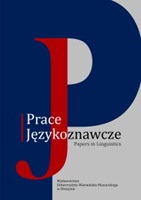
Review of: Marta Chojnowska, Małgorzata K. Frąckiewicz: Prawosławni łomżyńscy. Opracowanie ze słownikiem nazwisk w cyklu Mniejszości narodowe i etniczne w XIX i początkach wieku XX w Łomżyńskiem. Polskie Towarzystwo Historyczne Oddział w Łomży. Łomża 2020, ss. 182.
More...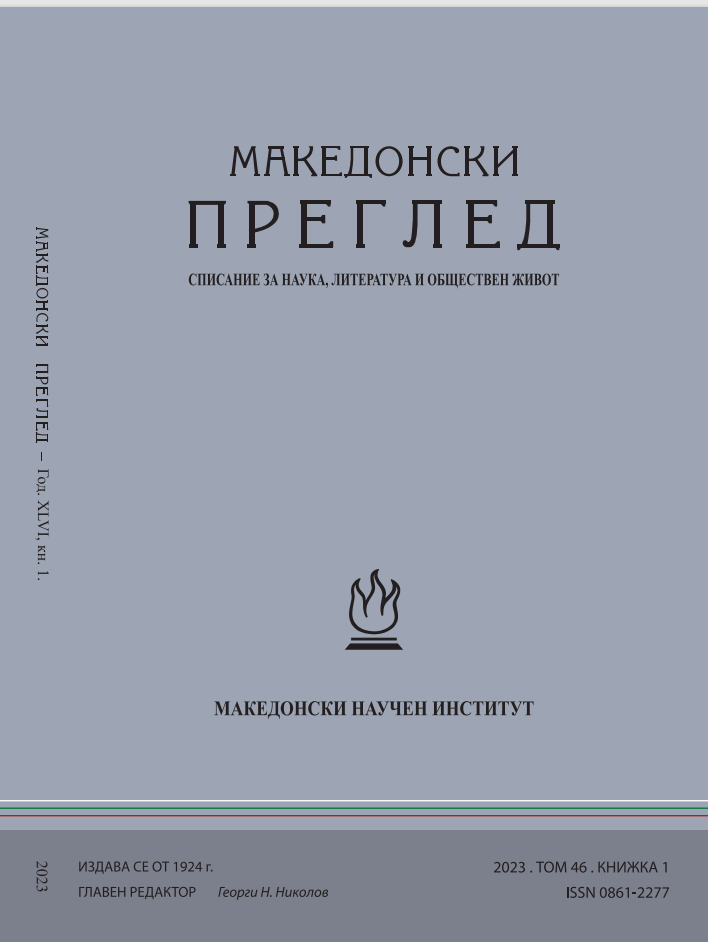
Metropolitan Philaret of Loveč was among the synodal bishops entrusted with the administration of the dioceses rejoined to the Bulgarian Church in April 1941. The Metropolitan was appointed to rule the Ohrid-Bitola Diocese. By accepting his new appointment, he distinguished himself behaving with tact and moderation, showed understanding and sensitivity for the local Bulgarians’ pains and aspirations. At the beginning of September 1944, together with the state administration and military units, Bulgarian ecclesiastical authorities were forced to withdraw from the newly liberated lands. Before leaving his position, Philaret of Loveč manifested responsibility and took care of church matters that his diocese in charge did not fall into chaos due to the looming lawlessness.
More...
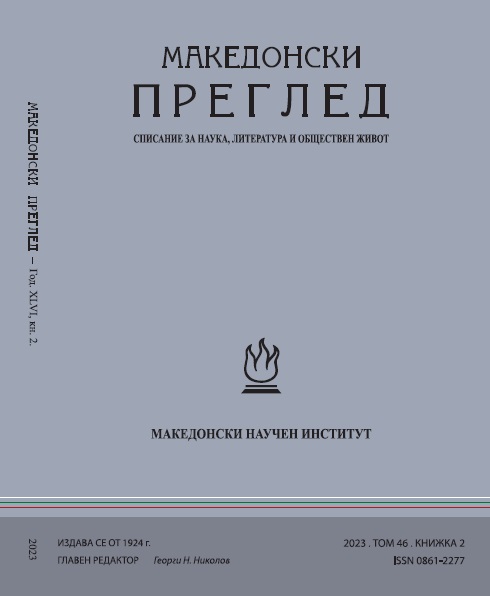
Both dialectal texts in the article were collected in Toronto, Canada from two informants belonging to two different generations and originating from the villages of Gàbresh and Drenòveni in the Kostur (Kastoria) region. They disclose new and never published information on the IMARO’s activities, the fate of the Bulgarian language in South-western Macedonia under Greek rule, the difficulties of the locals to visit their native villages during the years of the Greek Military Junta (1967 – 1974); they also contain some comments made by Atatürk on Bulgaria’s behalf. History and dialects of the area remain under studied, due to the Greek rule exerted on this area and its heavy assimilatory policies. The new information will help fill the gap, even to a small extent. The texts also serve as a supplement to Blagoy Shklifov’s work on the Kostur dialect.
More...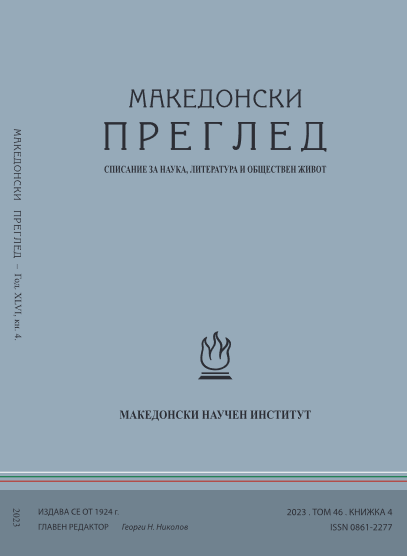
The article examines a practically unknown episode of educational and social policy during the Bulgarian rule of Vardar Macedonia 1941 – 1944: the opening of the State Institute for the Deaf and Dumb in Skopje. Regardless of the difficult wartime conditions and the unresolved problems of the deaf community in the old boundaries of the country, the Bulgarian state, guided by responsibility and humanity towards the deaf schoolchildren in the new lands, including Pirot and Vrana districts, made maximum efforts to respond to their needs and to fulfil the endeavour. Unfortunately, despite the finding of a suitable building and its equipment, the secondment of appropriately trained teachers from the three institutes for the deaf and dumb in Bulgaria and the allocation of the necessary budget funds, the activity of the State Institute for the Deaf and Dumb in Skopje, which onlystarted at the end of 1943, was discontinued already at the beginning of 1944 – given the end of classes and the evacuation of a number of educational institutions due to the bombing of the city by the Allies.
More...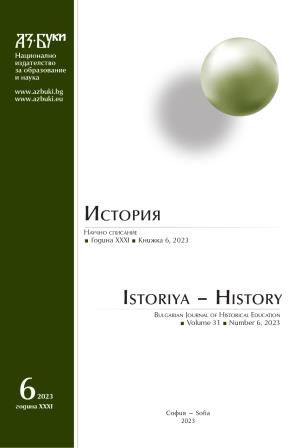

This article aims to outline the activities of the Emigration Museum in Gdynia (Polish abbrev. MEG) inbuilding relations with the Polish diaspora and maintaining Polish identity among Poles and peoplewith Polish ancestry living abroad. Its main thesis is that the MEG, as a comparatively small institution, has a relatively large potential for shaping symbolic and identity ties with the Polish diasporaand could potentially be an important actor for activities undertaken in this sphere, implementedas part of a broadly defined policy with regard to and for Poles living abroad. The article consistsof an introduction, three main sections and a conclusion. In the first section, we briefly define thediasporic policy in its subject and object dimensions, present selected concepts that typify this policy, and point out the role of culture and cultural institutions in building symbolic and identity tieswith the diaspora. The second section was devoted to presenting the history, circumstances of theestablishment and organizational basis of the Emigration Museum in Gdynia. The museum, although technically a self-government cultural institution, is the first and only museum in the country to show the history of emigration from Poland and Polish lands in a comprehensive way. Sectionthree, on the other hand, focuses on showcasing selected MEG activities in forming symbolic andidentity ties with the Polish diaspora.
More...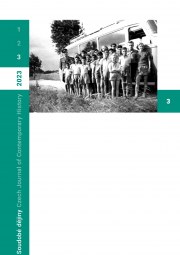
This text aims to analyse representations of “Gypsies” (cikáni) in Czechoslovak criminology in the period from 1945 to the onset of normalization. My focus is also on the issue of long-term continuities and discontinuities in the criminological discourse of the first half of the twentieth century. In the period of interwar Czechoslovakia, police expertise played a crucial role in criminalizing and marginalizing Roma and Sinti in Czechoslovak society, when it served to register, control and carry out surveillance of “wandering Gypsies” (potulní cikáni), and also greatly informed public debate on the issue. In the period of Stalinism, with the abolition of former police-repressive legislation, criminology still offered various representations of “Gypsies” as criminals, but these did not extend beyond the narrow framework of the police community. Ideological emphasis on representing “Gypsies” as victims of capitalism and understanding the “Gypsy question” as a social problem required different representations of Roma – as a social group that could be assimilated into the constructed socialist collective. However, after a certain degree of setback in the period of Stalinism, the development of criminological expertise in the 1960s in Czechoslovakia also brought about an increased interest in “Gypsies”, which was also characteristic of the emerging normalization regime.
More...
Review of: SEDLICKÁ, Magdalena: „Není přítel jako přítel“: Židé v národním státě Čechů a Slováků 1945–1948. Praha, Academia – Masarykův ústav a Archiv AV ČR, v. v. i., 2021, 225 pages, ISBN 978-80-200-3307-9 and 978-80-88304-58-6.
More...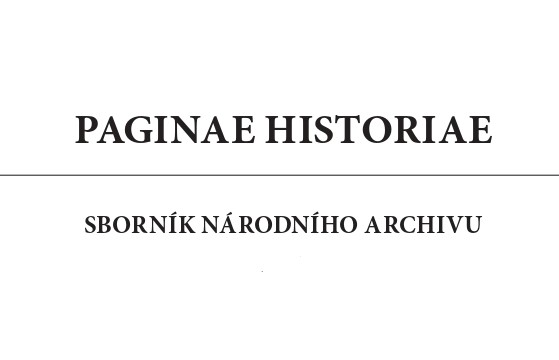
Historickým faktem je, že území Podkarpatské Rusi bylo do 1945 roku součástí mnoha evropských států, tudíž Statní archiv Zakarpatské oblasti (DAZO) spravuje množství dokumentů propojených s dějinami množství zemí evropského kontinentu. Díky tomu je Státní archiv Zakarpatské oblasti nejstarším a nejbohatším archivem na Ukrajině. V depozitářích se nachází více jak 1 360 000 složek popisujících tragický osud lidu karpatského regionu a jeho boj za svoji národní existenci. Obsah dokumentů se dotýká dějin Maďarska, Česka, Slovenska, Rumunska, Polska a ostatních evropských zemí – těch, které měly vliv na historický osud a socioekonomický rozvoj Zakarpatí (Podkarpatské Rusi).
More...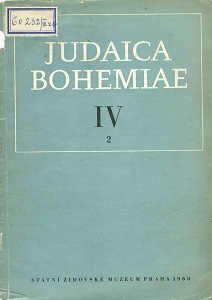
1. La nouvelle exposition du Musée juif d’Etat „Millenium judaicum bohemicum“ (Libretiste: Doc. dr. Vladimir Sadek, Architecte: arch. Bohumil Ulrich, Graphique: Jaroslav Béza) 2. Conférences d’automne 1967 du Musée juif d’Etat
More...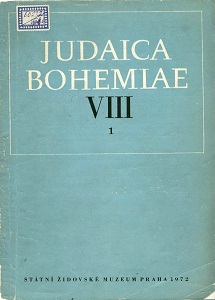
1. Le cycle des conférences d’automne 1970, du Musée Juif d’Etat 2. Le cycle des conférences du Museé Juif d’Etat en 1971 3. L’exposition „Kepler et Prague“
More...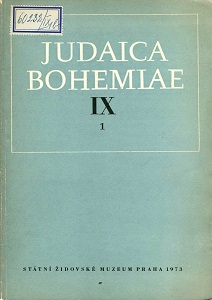
1. Terezín (Theresienstadt) am 3, September 1972 2. Le cycle des conférences „De l’histoire de l’art juif“
More...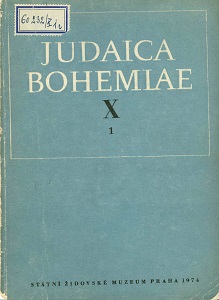
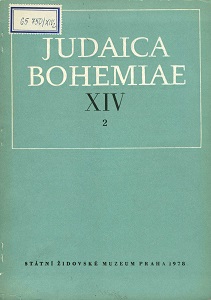
1. Выставка «Советскя Армия» - освободительница» 2. Die Kunst im Konzentrationslager Theresienstadt als Form des antifaschistischen Widerstandskampfes 3. Information on the Course of General Restoring the Memorial Placed in the Pinkas Synagogue
More...